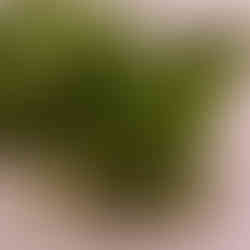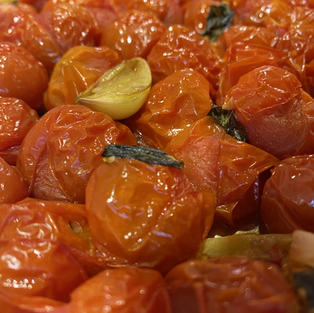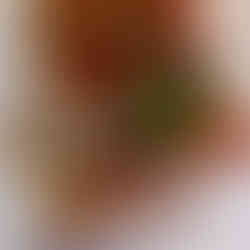Ricotta Bruschetta with Sweet and Spicy Tomatoes
- Michelle Iannelli-Rubin
- Dec 4, 2020
- 3 min read
I just love cheese! Cheese and tomatoes, the perfect combo! I am always searching for quick and easy nibbles that are tasty and impressive to look at when we have friends over for dinner. Thankful to have been introduced to these decadent bruschettas in October 2019 at the Food Network & Cooking Channel New York City Wine & Food Festival.

It was there I finally met my all time favorite celebrity chef, Giada! This picture always make me smile. She was serving these brushcettas at the event. Bonus, we also got to meet her daughter Jade, as she was whipping up nutella treats for the boys! Priceless.
Back to the bruschetta business! Ricotta translates from Italian as "re-cooked" and is a soft, fresh cheese made from whey leftover in the production of other cheeses. Learning this, I was curious to learn more about the cheesemaking process. In the cheesemaking process, whey is the liquid remaining after milk has been curdled and strained; and most cheeses are made in a 6 step process.
First, you start with raw milk. Cow's, goat's, and sheep's milk is most commonly used to make cheese, and about 10lbs of milk makes 1 lb of cheese on average. Second, the milk is Homogenization/Standardization/Pasteurization. These are three long words that mean that the milk is mixed up, the fat content is standardized (adjusting the composition of cheese milk to maximize economic return from the milk components while maintaining both cheese quality and cheese composition specifications), and then the milk is heat-treated anywhere from 145 degrees - 300 degrees to kill any unwanted bacteria. In traditional and artisanal cheese-making this step is often skipped. Fascinating, no? I was intrigued.

The Third step is Coagulation and Curd Separation. This is when the milk is acidified by: heating it up; adding an enzyme called Rennet; and adding good bacteria. These actions cause the milk to coagulate, and then the puddling-like milk is cut and drained of the liquid whey. Next and the Fourth step is Salting. Salt is added to give flavor, to suppress bad bacteria growth and to draw out additional whey. Many fresh soft cheese like Ricotta and queso blanco are done after this stage. The Fifth step is Pressing! My favorite cheeses, the harder, drier cheese need to be squeezed to expel more whey. This is accomplished by placing the curds in a mold and using a press. Usually the mold is cylindrical; this is what gives wheels of cheese their shape. Lastly, the Sixth step is Aging the cheese. In this step, there are three things that are carefully controlled to develop deep flavor and texture: Time, Temperature, & Humidity. Cheese can be aged anywhere from a week to several years. That picture is a charcuterie board that I made for Thanksgiving a few years ago with a lot of my favorite cheese.
So Ricotta cheese is a WHEY CHEESE! It forms in the 4th step of the cheesemaking process, and these ricotta bruschetta were out of this world, delicious!! I chose this bruschetta to prelude my main course of pepper encrusted beef tenderloin. It was a perfect welcoming of our guests and start to the flavor party in our mouths!
I chose a freshly baked baguette, and pre-order Giada's recommended Calabrian chili peppers for the honey drizzle. The light, delicate consistency and clean flavor of the ricotta balanced the pops of oven roasted tomatoes. The roasted tomatoes were seasoned lightly with olive oil, garlic, salt and fresh basil and then topped with the spicy honey. Served over a freshly toasted baguette, these appetizer nibbles were delicate yet flavorful.

Now it's time for you to go get it! You can find the recipe at the Giadzy Bon appetito!












Comentários